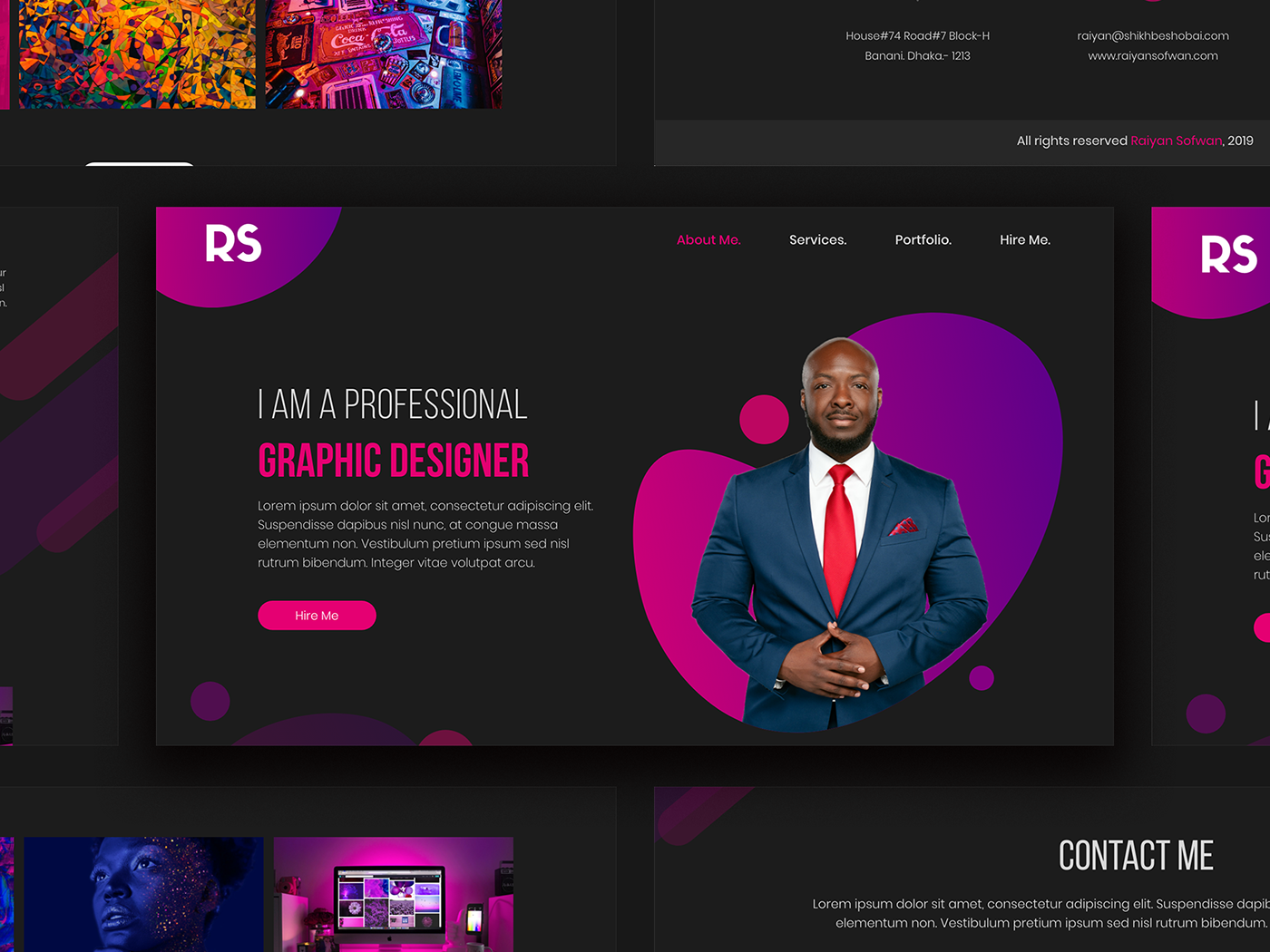Recognizing the Role of Responsive Style in Modern Internet Site Advancement
In today's electronic landscape, receptive layout is no longer a luxury however a requirement in website development. The importance of receptive style extends past individual experience-- it is also an essential factor in search engine optimization and access.
Importance of Responsive Layout
In today's digital landscape, the relevance of responsive style in internet site development can not be overemphasized. Responsive layout permits internet sites to instantly adjust their format and capability based on the screen dimension and alignment of the tool being used.
Moreover, responsive design is essential for search engine optimization (SEARCH ENGINE OPTIMIZATION) Look engines like Google focus on mobile-friendly web sites in their search results, indicating that a receptive style can dramatically influence a site's visibility and ranking. This optimization not just enhances the customer experience yet additionally drives natural traffic and increases the potential for conversion and revenue generation.
Furthermore, responsive style offers organizations an affordable remedy by getting rid of the demand for numerous versions of a web site. By enhancing web advancement procedures and reducing upkeep initiatives, firms can designate resources a lot more efficiently, ultimately bring about boosted roi. Therefore, responsive design is essential in today's affordable digital environment.
Crucial Element of Responsive Design
To efficiently apply receptive design, it is important to concentrate on numerous crucial aspects that make certain optimum capability and individual experience across varied gadgets. One of the basic components is the versatile grid format, which enables designers to produce liquid grids that instantly readjust to different screen dimensions. This makes certain that web content keeps proportionality and readability, no matter the gadget being utilized.

In addition, touch-friendly navigating is indispensable for receptive layout. Applying conveniently tappable switches and instinctive motion controls boosts use on touchscreen tools. Focusing on efficiency optimization is also important, as it boosts filling times and decreases bounce rates, specifically on mobile connect with variable rate.
Finally, utilizing a mobile-first technique guarantees that the style is originally optimized for smaller sized screens before broadening to suit desktop computers. This technique assures that vital capability and aesthetics are preserved throughout all systems, inevitably improving the overall customer experience.
Influence on Customer Engagement
Responsive design significantly affects customer engagement by improving ease of access and fulfillment across numerous devices. By making certain that a site's layout adapts effortlessly to various display dimensions, receptive layout permits individuals to gain access to content easily, whether they are making use of a desktop computer, mobile phone, or tablet . This adaptability lowers the demand for unnecessary zooming or scrolling, supplying an extra pleasurable and user-friendly browsing experience. Therefore, users are most likely to stay on the website much longer, explore extra pages, and connect with the material, every one of which are vital indicators of boosted involvement.
In addition, receptive style adds to faster page loading times, which is important for retaining user interest. Individuals are more likely to desert a site if it takes too lengthy to load, particularly on smart phones. By maximizing efficiency for varied platforms, responsive design lessens filling hold-ups, keeping users engaged and minimizing bounce rates.
SEO Advantages of Responsive Design
While boosting individual experience is a key goal, receptive design additionally plays an important function in improving a web site's search engine optimization (SEARCH ENGINE OPTIMIZATION) Browse engines, especially Google, prioritize mobile-friendly internet sites, thus awarding those that supply smooth experiences this content throughout gadgets. Responsive layout makes certain that a website adapts to numerous display dimensions, eliminating the requirement for different mobile and desktop versions. This versatility not only boosts individual experience yet likewise decreases the risk of duplicate content, which can negatively impact SEO positions.
Additionally, responsive layout aids in faster page packing times, a vital factor in search engine optimization. Online search engine favor internet sites that load rapidly, recognizing that individuals are more probable to desert websites that take also long to display. By using responsive layout, designers can simplify and optimize photos material, guaranteeing efficient packing and boosted online search engine my latest blog post positions.
Furthermore, a cohesive URL framework across devices simplifies the indexing process for internet search engine, enhancing crawl performance. This uniformity in URLs reinforces a web site's authority and integrity, resulting in boosted presence in search results page. In summary, receptive design is not merely a fad however a fundamental part of search engine optimization technique, ensuring sites are both easy to use and search engine suitable.
Implementing Responsive Design Methods
In the realm of modern-day web development, executing receptive layout methods is akin to crafting a functional canvas that adjusts effortlessly to numerous display measurements. Central to this technique is making use of adaptable grid-based layouts, which use relative units like percentages instead of taken care of systems such as pixels. This makes sure that web content ranges properly throughout gadgets. An additional essential method includes employing media questions, which allow developers to apply different styles based on the features of the tool, such as resolution, width, and elevation.
Responsive photos and media are likewise important components. By using strategies like CSS media questions and the HTML 'image' aspect, developers can offer More Help properly sized pictures based on the customer's tool, maximizing lots times and boosting customer experience. In addition, the consolidation of liquid typography guarantees that text is legible and visually pleasing on any type of screen, attained through scalable systems like 'rapid eye movement' and 'em'.

Final Thought
Receptive design constitutes an important aspect of modern web site growth, substantially enhancing user experience across a variety of gadgets. By integrating adaptable layouts, scalable photos, and touch-friendly navigation, it enhances individual interaction and enhances website efficiency. Furthermore, receptive style is pivotal for SEO, as it straightens with internet search engine' choice for mobile-friendly websites, consequently increasing exposure and natural web traffic. Ultimately, executing receptive style approaches makes sure boosted ease of access and functionality, rendering internet sites more effective and user-centric.
To efficiently carry out receptive design, it is important to focus on numerous crucial elements that ensure optimum capability and customer experience across diverse devices.Responsive layout dramatically affects individual interaction by improving ease of access and complete satisfaction throughout numerous tools. By making sure that a site's design adapts flawlessly to various display sizes, responsive layout enables individuals to accessibility content easily, whether they are using a desktop, tablet, or smartphone.While improving customer experience is a main objective, responsive design likewise plays a critical duty in boosting a site's search engine optimization (SEARCH ENGINE OPTIMIZATION)Receptive design constitutes a crucial facet of modern site advancement, significantly improving customer experience throughout a variety of gadgets.
Comments on “How to Select the Right Tools for Your Website Design Projects”